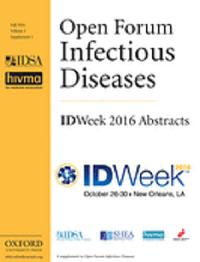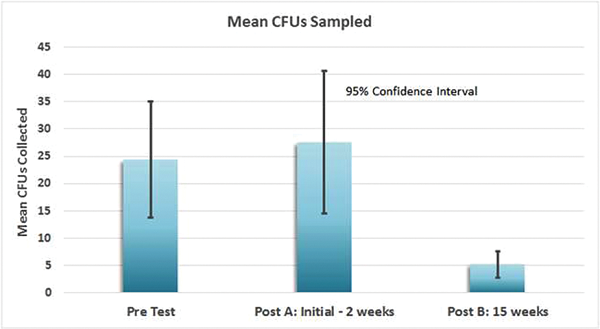A Research from Open Forum Infectious Diseases (OFID) has shown that Vital Vio’s VioSafe™ White Light Disinfection™ technology has a sustained impact on bacterial reduction on high touch surfaces in interior environments, including in a medical trauma room.
 |
|
(Image: Open Forum Infectious Diseases) |
Background.
Standard housekeeping methods are inadequate at removing microbial contamination from the modern day healthcare environment. Healthcare systems have started implementing an array of advanced disinfection technologies to assist with surface disinfection. Most of these technologies require the room to be sealed, making them impractical for some applications. This study evaluates a passive light-emitting diode (LED) disinfection system in an environment that cannot be closed, a level II trauma room.
 |
|
(Image: Vital Vio) |
Methods.
Efficacy of the system was determined by sampling environmental surfaces exposed to the LED light. The trauma room was cultured in 5 locations using RODAC plates, during 3 separate time intervals: pre-installation (Pre, n = 30), post initial 2 weeks (Post A, n = 25), post initial 15 weeks (Post B, n = 25). Colony counts were enumerated after 48 hours. Trauma room usage was monitored for average patient minutes per study day, using the electronic medical record. The data were analyzed using 1-way repeated-measures ANOVA, with Tukey HSD for further post hoc analysis.
Results.
There was a statistically significant effect over time on reduction in microbial surface contamination; F(2, 48) = 4.61, p = 0.0147. The mean colony counts and average patient minutes per study day for the 3 intervals were Pre = 24.47, 254; Post A = 27.6, 368; Post B = 5.16, 490. Using a Tukey HSD calculated a significant difference between the Pre versus Post B, p = 0.02; as well as the Post A versus Post B, p = 0.009.
 |
 |
|
(Image: Open Forum Infectious Diseases) |
Conclusion.
This study demonstrates that the LED disinfecting lights significantly reduced the microbial surface contamination in a trauma room at 15 weeks, even when room usage increased. The results suggest that LED Disinfection may not produce immediate results. However, over time, the lights are effective at reducing the overall microbial contamination. Further research is needed to determine precisely when a significant reduction in microbial surface contamination occurs.















